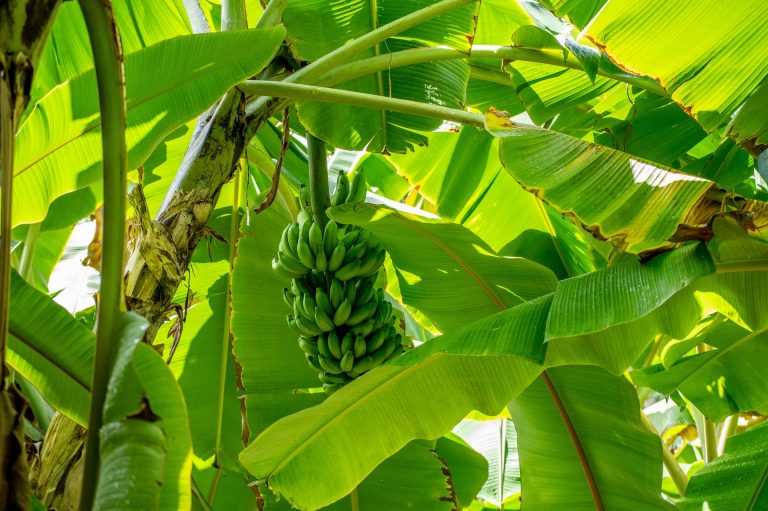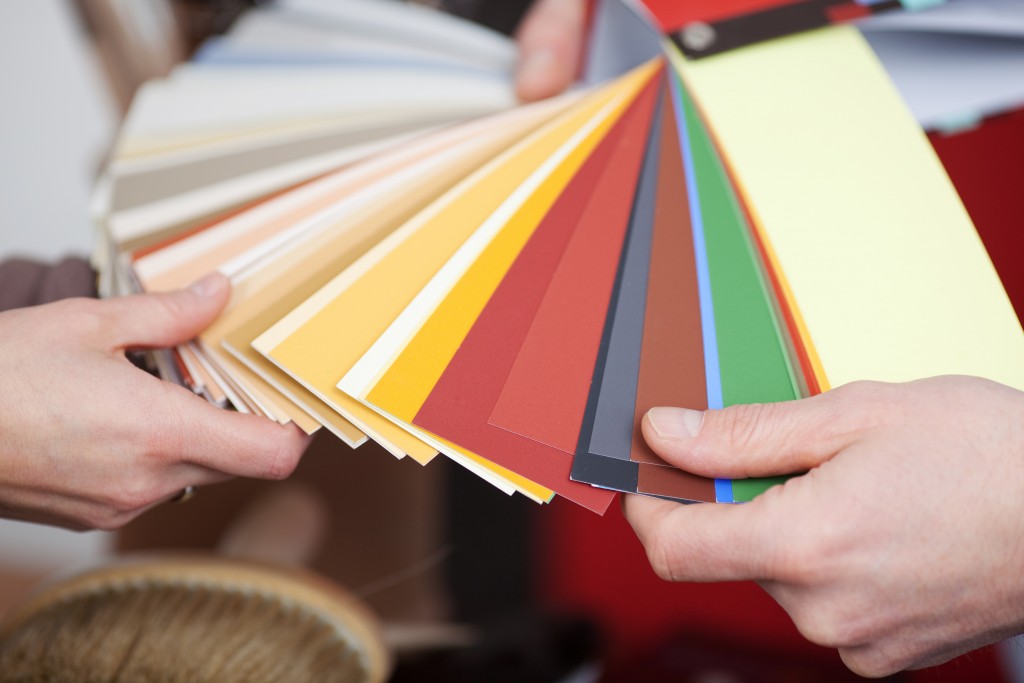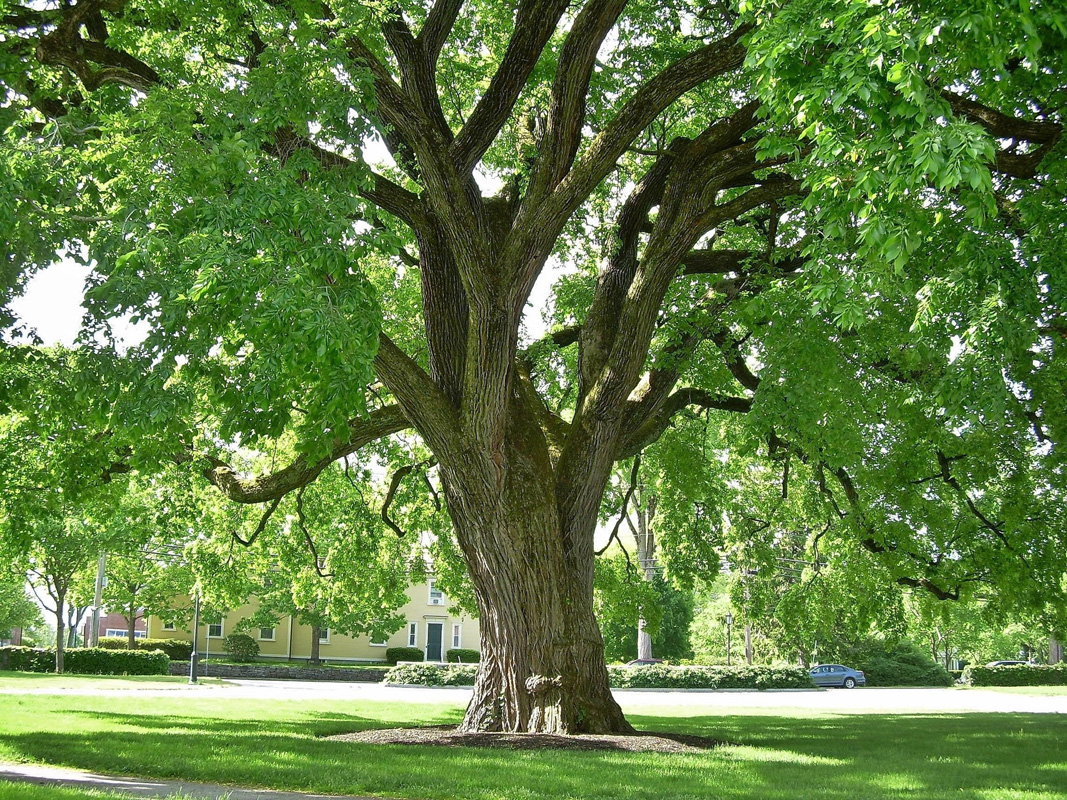Beyond their sweet taste and rich texture, bananas have an exotic and lush allure that can be a captivating addition to any home garden. The unique satisfaction derived from planting, nurturing, and ultimately harvesting fruits from your own garden is an unparalleled experience. Banana trees, in particular, are a popular choice for home gardeners because they thrive in various climates and produce delicious fruits year-round.
This article aims to demystify the process of cultivating this tropical fruit at home, turning a simple banana into a flourishing banana tree. We will provide a comprehensive, step-by-step guide to help you successfully grow your own banana tree from a banana. Keep reading!
Step-By-Step Guide to Growing Bananas from a Banana
Selecting a Banana Variety
Selecting the right variety of bananas to grow in your home garden is crucial and depends largely on your climate and available space. When considering which banana variety to choose, it’s essential to know that different types have specific growth requirements and characteristics.
The Dwarf Cavendish is popular due to its ability to thrive indoors and in cooler climates. This variety typically grows to about 6 to 10 feet, making it suitable for those with limited space. Its compact size allows it to be grown in pots or containers, making it an excellent choice for indoor gardening.
For those looking for an even more compact banana plant, the Super Dwarf Cavendish is an excellent choice. This variety reaches only about 4 feet in height, making it perfect for small gardens or for growing in containers indoors. Despite its tiny stature, it still produces delicious bananas that are just as tasty as those from larger plants.
On the other end of the spectrum, the Giant Highland Banana is a larger variety that can reach over 20 feet in height. This type of banana plant requires ample sunlight and warmth, making it more suitable for outdoor environments in warmer climates. If you have a spacious garden and live in a tropical or subtropical area, the Giant Highland Banana can be a stunning addition to your landscape.
If you reside in a cooler climate, the Goldfinger Banana is a hardy variety that is resistant to many banana diseases and can tolerate cooler temperatures. This variety can grow up to 15 feet tall and requires a bit more space compared to the Dwarf and Super Dwarf Cavendish varieties. However, its ability to withstand colder conditions makes it a great choice for those living in regions with milder summers.
Preparing the Banana Plant
To successfully grow a banana plant from a banana, you will need a ripe, full-grown banana. Here are the detailed steps you can follow:
- Purchase a Ripe Banana: Start by selecting a ripe banana. While any banana variety will suffice, choosing organic bananas is often recommended. Organic bananas are free from pesticides and chemicals that could hinder growth, ensuring a healthier plant.
- Extract the Seeds: Carefully slice it into thin sections once you have your ripe banana. As you slice, you’ll notice tiny black dots within the banana flesh: the seeds. With the help of a tweezer or a toothpick, gently extract these seeds from the banana sections. To ensure cleanliness, rinse the seeds under running water to remove any pulp residue.
- Prepare the Seeds for Germination: Now, it’s time to prepare the seeds for germination. Take a paper towel and dampen it with water. Spread the banana seeds on the damp paper towel, ensuring they are evenly spaced. Once the seeds are in place, gently fold the paper towel to cover the seeds completely.
- Germinate the Seeds: The next step is to initiate the germination process. Place the folded paper towel with the seeds inside a plastic bag, ensuring it is properly sealed. This creates a controlled environment for the germination process. Find a warm spot to store the bag, as the ideal temperature for germination is around 60-65°F. Check the seeds daily, providing them with the necessary warmth and moisture for sprouting. Once the seeds begin to sprout and show growth, they are ready to be planted.
- Plant the Sprouts: Fill a pot with well-draining soil, ensuring it is suitable for growing banana plants. Plant the sprouted seeds in the soil, burying them about 1/4 inch deep. It’s important to maintain adequate moisture levels in the soil throughout the growing process, so water the plant regularly. Additionally, choose a sunny spot for the pot, as banana plants thrive in full sunlight. With patience and care, you should start to witness the growth of your banana plant within a few weeks.
When choosing a banana for propagation, it’s important to select a healthy, ripe fruit. Look for bananas that are bright in color, without any visible cuts or bruises. The banana should be firm but not too hard. It’s best to select a banana that’s just beginning to ripen, as overripe bananas may have compromised seeds. Organic bananas are ideal, as they have not been exposed to pesticides or chemicals that could inhibit growth. Remember, a healthier banana will likely result in a healthier banana plant!
Germinating Banana Seeds
The germination process of banana seeds is critical to the successful growth of a banana plant. It involves carefully considering several factors, such as soil, moisture, and warmth.
Soil: The right type of soil is crucial for banana seed germination. Banana plants prefer well-draining soil, which is rich in organic matter. The soil should retain enough moisture for the seeds to germinate and allow excess water to drain away to prevent water-logging.
Moisture: Moisture is another vital factor for germinating banana seeds. The seeds should be kept moist but not soaked during germination. Over-watering can lead to seed rot and inhibit germination.
Warmth: Banana seeds require consistent warmth to germinate. The ideal temperature range for germination is around 60-65°F. It’s essential to keep the seeds in a warm environment throughout the germination process.
Once prepared and placed on a damp paper towel, the seeds should be sealed in a plastic bag to create a controlled environment that maintains the necessary warmth and moisture. Regularly checking the seeds to ensure they have the right conditions for sprouting is essential. Once the seeds begin to sprout, they are ready for planting. Planting the sprouted seeds about 1/4 inch deep in well-drained soil and maintaining adequate moisture levels will ensure the successful growth of your banana plant.
Planting Banana Suckers
Another common method for growing banana plants is through the use of suckers, also known as pups. These are offshoots that emerge from the base of a mature banana plant. Utilizing suckers for propagation can be a quicker route to establishing a banana tree, as these offshoots already have a head start in terms of development.
Selecting a Sucker for Planting
When selecting a sucker to transplant, aim for one that is about 2-3 feet tall and has a robust, healthy appearance. Smaller suckers, often called “peepers,” should be left to mature a bit before they are separated from the parent plant.
Removing the Sucker
To remove the sucker, carefully dig down into the soil to expose the point of attachment to the parent plant. Using a sharp, sterile knife, cut the sucker away from the parent plant, aiming to keep as much of the sucker’s root system intact as possible.
Preparing for Planting
Before planting the sucker, prepare a hole in your garden or pot that is wide and deep enough to accommodate the sucker’s roots without crowding. If planting multiple suckers, they should be spaced approximately 2-4 meters apart to ensure they have ample room to grow and spread.
Planting the Sucker
Place the sucker in the hole, ensuring that the point where the stem changes color from green (above ground) to white (below ground) is level with the soil surface. This marks the proper planting depth. Backfill the hole with rich, well-draining soil and firm it around the base of the sucker.
Post-Planting Care
After planting, water the sucker thoroughly and continue to provide regular water and care as your banana tree establishes itself.
The use of suckers for propagation provides an efficient and effective method of growing banana plants, ensuring a healthy, vibrant tree that will, in time, produce its own delicious fruit.
Caring for Young Banana Plants
Young banana plants require meticulous care and attention for healthy development, and two key aspects of this care regimen involve the right watering practices and sunlight provision.
Watering: Bananas are tropical plants that love moisture, but, like most plants, they do not tolerate water-logged conditions well. The aim is to keep the soil consistently moist without over-saturating it. Young banana plants require regular watering, but it’s crucial to allow the soil surface to dry out slightly between waterings. This allows the roots to breathe and helps to prevent root rot. During hot weather, you may need to water more frequently, but always check the top inch or so of the soil to gauge moisture levels before adding more water.
Sunlight: Bananas are sun-loving plants that need plenty of light for optimal growth. A young banana plant should receive at least 6-8 hours of bright, indirect sunlight per day. While they enjoy the sun, it’s important to guard against intense, direct sunlight, which can scorch their leaves. If you’re growing your banana plant indoors, place it near a south-facing window or in a sunroom for maximum light exposure.
Optimal Growing Conditions: Along with watering and sunlight, it’s essential to consider other growing conditions for your young banana plant to thrive. Soil rich in organic matter is ideal for banana plants. The pH should be slightly acidic to neutral (pH 5.5-6.5). Ensure the plant has adequate space to grow, as banana plants can get quite large. Regular feeding with a high potassium fertilizer will encourage fruit production once the plant matures. Monitor the plant for any signs of disease or pests and address these promptly to keep your plant healthy.
With the right care, your young banana plant will mature into a healthy, fruit-bearing tree, bringing a tropical feel and rewarding gardening experience.
Soil Requirements
Banana plants thrive best in deep, well-drained soil rich in organic matter. They prefer a soil pH ranging from slightly acidic to neutral (5.5 to 6.5). A soil mix containing loam, sand, and a generous amount of compost is ideal for providing the nutrients these plants need while ensuring good drainage.
Soil Preparation
Before planting your banana plant, take time to prepare the soil. Start by removing any existing grass or weeds from the planting area, as these can compete with your banana plant for nutrients. It also helps to loosen the soil thoroughly using a garden fork or tiller, breaking up any compacted areas that could hinder the drainage.
Soil Drainage
Proper soil drainage is crucial for banana plants. While they require consistent moisture, they do not tolerate water-logged soil, which can lead to root rot. Incorporating organic matter, such as compost or well-rotted manure, into the soil can improve its structure and drainage. If your soil is heavy clay, consider growing your banana plant in a raised bed or large container filled with a well-draining soil mix to improve drainage.
Soil Fertility
Bananas are heavy feeders, so ensuring soil fertility is vital for their healthy growth and fruit production. Organic matter improves soil structure and drainage and adds nutrients to the soil. Regularly adding compost or a balanced organic fertilizer to the soil can help maintain its fertility. Also, banana plants benefit from a regular feeding schedule with a fertilizer high in potassium, especially during the growing season.
Protecting from Pests and Diseases
Like any other plant, banana plants are susceptible to various pests and diseases that can significantly affect their growth and productivity.
Common Pests
Banana Aphids: Banana aphids are tiny, delicate insects that extract nutrients from the sap of banana plants, resulting in yellowing and wilting. They also transmit the Banana bunchy top virus (BBTV), a serious disease of banana plants. Regular inspection and early detection are essential. For control, use a strong stream of water to dislodge aphids or apply an organic insecticidal soap.
Banana Weevils: Banana weevils are beetles whose larvae bore into the plant’s corm, causing significant damage and sometimes death of the plant. To prevent infestation, remove and destroy old corms and plant residues. If infestation occurs, apply beneficial nematodes to the soil to kill weevil larvae.
Common Diseases
Panama Disease: Panama disease, also known as Fusarium wilt, is a soil-borne fungal disease that causes wilting and yellowing of the leaves, and eventually plant death. To prevent Panama disease, use clean planting materials and avoid over-watering. If infection occurs, remove and destroy the infected plants and avoid replanting bananas in the same spot.
Black Sigatoka: Black Sigatoka, caused by a fungus, is a severe disease that causes dark streaks on the banana leaves, reducing the plant’s photosynthetic ability and yield. To prevent the disease, maintain good air circulation around the plants and avoid wetting the leaves when watering. Fungicides can be used for control, but it’s better to use a mixture of cultural and organic control methods because of resistance issues.
Organic Control Methods
Neem Oil: Neem oil is an excellent organic solution for controlling many pests and some fungal diseases. It’s non-toxic to humans and beneficial insects but kills pests like aphids and can help control fungal diseases.
Beneficial Insects: Introducing beneficial insects, such as ladybugs and lacewings, can help control aphids and other pests. These insects are natural predators of many pests and can help maintain a balanced ecosystem in your garden.
Compost Tea: Compost tea is an organic remedy that can be used to combat fungal diseases. It boosts the plant’s immune system and provides beneficial microorganisms that can help fight off diseases.
By recognizing common pests and diseases, employing prevention methods and using organic control techniques, you can protect your banana plants and ensure they remain healthy and productive. Regular inspections of your plants are also essential to early pest and disease detection.
Fertilizing Banana Plants
Banana plants are heavy feeders and require substantial nourishment to support their rapid growth and fruit production. Therefore, a regular and robust fertilizing schedule is crucial.
Seedlings: After planting the banana seeds or suckers, start with a balanced organic or synthetic fertilizer that has equal amounts of Nitrogen (N), Phosphorous (P), and Potassium (K). This will provide a good foundation for the young plant’s growth.
Vegetative Stage: As the banana plants grow, their nutrient needs change. They require more nitrogen to support leaf development and overall growth. A synthetic fertilizer with a high first number, such as 24-8-16, or an organic fertilizer rich in nitrogen, may be used.
Flowering Stage: Once the banana plant starts flowering, its need for phosphorus, especially potassium, increases. Phosphorus aids in root development, while potassium supports fruiting. At this stage, consider switching to a fertilizer with a higher last number, such as 15-5-30, or use an organic potassium-rich supplement like wood ash or green sand.
Organic vs Synthetic Fertilizers: Choosing organic and synthetic fertilizers often depends on personal preference and gardening practices. Organic fertilizers, such as compost, manure, or bone meal, release nutrients slowly, improve soil structure, and are environmentally friendly. However, they can be more costly and bulky.
Synthetic fertilizers are comparatively cheaper, widely available, and offer nutrients in a readily available form. Like other plants like coconut trees and mango trees, banana plants respond well to synthetic fertilizers. However, they lack the soil-improving benefits of organic fertilizers.
Regardless of the type of fertilizer used, following the manufacturer’s instructions properly is crucial to avoid over-fertilization, which can burn the plant and damage the soil’s health. Regular soil testing can also help to monitor nutrient levels and adjust the fertilization strategy as needed.
Pruning and Maintenance
Pruning Practices for Fruit Production
Banana plants benefit significantly from pruning, promoting healthy growth and enhancing fruit production. The first pruning should occur when the banana plant has about six leaves. The plant’s top should be cut off, encouraging the growth of lateral branches, which will bear the fruit. After a banana plant has fruited, the main stem should be cut back to about 2.5 cm above the ground to allow new suckers to grow.
When it comes to fruit production, the “mother plant” that has already fruited should be pruned back, as it will not fruit again. By doing this, energy can be redirected to the new suckers or “pups,” which will develop into fruit-bearing plants.
Maintenance for a Healthy and Well-Shaped Plant
Maintaining a healthy and well-shaped banana plant requires a balance of proper watering, fertilizing, and pest management. Be careful not to overwater the plant, which can lead to root rot. A well-draining soil rich in organic matter will help ensure the right moisture levels.
Regular fertilization is essential for the plant’s health and shape. A balanced fertilizer that provides the nutrients necessary for growth will help maintain a robust structure and promote leaf development.
Keeping an eye out for pests and diseases will also aid in maintaining a healthy plant. Routinely inspect your banana plant for any signs of damage and take swift action if any abnormalities are found.
For a well-shaped banana plant, control the number of suckers that grow from the base. Generally, it’s best to maintain one main stem plus one or two additional suckers at different growth stages. This method, known as the “three-stem system,” ensures continuous fruit production while maintaining the plant’s shape and size.
Harvesting Bananas
Determining the Harvest Time
Knowing when to harvest bananas involves observing the fruit’s appearance. Bananas are typically ready to harvest when they’ve reached their full size and the ridges on the bananas’ skin have begun to round off. The color of the banana skin should also start changing from dark green to light green. Another sign of bananas maturing is the formation of a distinct neck at the stalk end of the fruit. It’s better to harvest bananas a little early and allow them to ripen after harvest than to let them ripen on the plant, which may attract birds and other pests.
Harvesting Techniques
Once the bananas are ready for harvest, it is crucial to use proper techniques to avoid damage. Use a sharp, clean knife or gardening shears to cut the banana bunch from the main stalk, leaving about 4-6 inches of stem attached to the bunch. Do not pull or twist the bananas from the bunch, as this can cause bruising. Instead, cut individual bananas from the main stem, beginning from the uppermost tier and working your way down. Wear gloves and long sleeves when harvesting bananas as the sap from the banana plant can stain skin and clothing.
Post-Harvest Handling
After harvesting, handle the bananas gently to avoid bruising, which can lead to premature ripening and spoilage. Hang the harvested banana bunch in a cool, shaded area to ripen. If you’re harvesting the bananas while still green to ripen later, wrap the end of the banana bunch in plastic wrap. This slows down the release of ethylene gas, which speeds up ripening, allowing you to control the ripening process.
Dealing with Frost and Cold
Protecting Banana Plants from Frost and Cold
Banana plants, being tropical, are very sensitive to cold and frost, which can cause serious damage and even kill the plant. However, with the proper precautions, you can protect your banana plants from frost and cold conditions.
Mulching: Mulching is one of the simplest and most effective ways to protect your banana plants from the cold. A thick layer of organic mulch around the base of the plant can insulate the soil, keeping it warm and preventing frost from reaching the roots.
Wrapping: Wrapping the plant, particularly the pseudostem, with horticultural fleece, bubble wrap, or burlap can provide an extra layer of insulation and protect it from frost. Ensure the wrapping is secured at the top but loose at the bottom to allow for ventilation and prevent rot.
Overhead Protection: Building a frost blanket frame or a makeshift greenhouse over your banana plants can shield them from frost and trap warmth.
Heating: In extremely cold conditions, introducing a small heat source, such as a string of holiday lights or a space heater, inside the protective wrapping or under the frost blanket can provide added warmth.
Watering: Watering your plants in the evening can also provide some frost protection. As the water freezes, it releases heat, which can raise the surrounding temperature slightly.
Winter Care in Cooler Climates
In cooler climates, providing winter care for your banana plants is essential for survival.
Overwintering Indoors: If your banana plant is in a pot, it is best to bring it indoors for the winter. Place it in a bright, warm location and reduce watering.
Overwintering Outdoors: For banana plants in the ground, cut back the leaves and pseudostem after the first frost, leaving about 4-6 inches of the stem. Cover the remaining stem and the surrounding soil with a thick layer of mulch.
Dormant Storage: In cold climates, another option is to dig up the banana plant, trim the leaves and roots, and store it in a cool, dark location for the winter. This method puts the plant dormant until it can be replanted in the spring.
Propagation by Division
Dividing Mature Banana Plants for Propagation
Banana plants propagate naturally through suckers or “pups” that grow from the base of the mother plant. This process is a type of vegetative propagation called division and is one of the most reliable and straightforward methods of banana plant propagation. Here’s how to do it:
Timing: The best time to divide banana plants is in the early spring or late winter when the plant is dormant or just beginning its active growth phase. The division at this time reduces stress on the plant and allows it to recover quickly as the growing season begins.
Selecting Pups for Division: Choose healthy and vigorous pups for division. Look for suckers that are at least 3 feet tall and have their own roots. These pups are often called sword suckers and have narrow, blade-like leaves. They are ideal for propagation as they have a good chance of survival and will mature faster.
Dividing the Pups: Prepare your tools before starting. You’ll need a sharp, clean spade or knife for division. Dig down into the soil about a foot away from the pup to avoid damaging the roots. Push the spade or knife downward to cut the sucker away from the mother plant. Try to retain as many of the pup’s roots as possible.
Planting the Divisions: After separating the pup, you can plant it in a pot or on the ground. Prepare the planting hole or pot by ensuring it is wide and deep enough to accommodate the roots without crowding or bending them. Place the pup in the hole or pot and backfill it with soil, firming it gently around the base of the pup.
Aftercare: Water the new plant thoroughly and provide shade for the first few weeks to protect it from direct sunlight. Continue watering regularly, but do not overwater, as this can lead to root rot.
Conclusion
Growing bananas may seem intimidating, but with the right knowledge and techniques, it can be a rewarding experience. By understanding banana plant growth stages, nourishing the plants with proper fertilization, pruning for fruit production and maintenance, harvesting at the right time, protecting from cold conditions and pests, and propagating through division, you can successfully grow healthy and productive banana plants in your garden. With patience and care, you can enjoy the delicious and nutritious fruits of your labor for years to come. Happy gardening!






